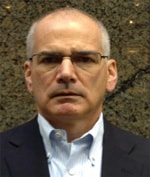HIGH TECH MEETS THE LAW OF INERTIA
By Paula Green
Treasurers wanting to move to high-end forecasting solutions still face an uphill challenge.

Even when a treasurer wants to move to a high-end system for forecasting cash, their efforts are still often stymied by internal politics, outdated processes, and disparate banking regimes. As a result, when it comes to managing the cash positions of their sprawling multinationals, sophisticated corporate treasurers are still often using surprisingly unsophisticated technology tools. Even with the proliferation of glitzy software applications put out by dozens of companies, many treasurers still fall back on the time-tested capabilities of spreadsheets to gauge the cash positions of their corporate coffers. Corporate treasurers say the time and expense associated with integrating new applications into existing software and training staff in far-flung locales to successfully use them act as deterrents to change.
“It’s expensive. And it takes a long time to implement a new system,” says Marcio Mantovani Pescara, cash flow and structured operations manager for Embraer in São José dos Campos, Brazil. “Training is also an issue. Teaching all the people to put the information into the system can be hard.”
Boyan Lalov, global cash manager at the Missouri headquarters of multinational Emerson, said a well-worn commercial spreadsheet application like Excel can be more flexible for a diverse manufacturing company of Emerson’s size. The company operates in 60 countries with 235 manufacturing locations and has 133,000 employees using multiple languages. Its annual sales tallied $24.2 billion for the 2011 fiscal year.
An out-of-the-box “cookie-cutter system” would be difficult to deploy in a decentralized corporate system like Emerson, in which subsidiaries and divisions use various structures to report their cash position, says Lalov.
TACKLING INCONSISTENCY
Inconsistent use of corporate-wide electronic banking technology—often as a result of the inconsistent state of global banking markets—can also make it difficult for a multinational to capture up-to-date snapshots of their cash positions around the world. A company’s European headquarters, for example, may know what the cash balances are at the end of each day. But its treasury executives in Singapore may have to wait for tallies to come in from its various banks throughout Asia to forecast its cash position. As such, it may make it impractical for international corporates to adopt such state-of-the-art technology.
Office politics also play their part. Persuading the various departments of a sprawling corporation to contribute data to a new budgeting and cash forecasting application can be difficult. “It shouldn’t be, but it may actually be easier for a corporate treasurer to gain the necessary cash flow data on a new business unit from the accounting department by just using a spreadsheet,” says Daniel Blumen, a partner at consulting firm Treasury Alliance Group.
And although charged with the responsibility of monitoring corporate cash flow—so a company can pay its employees, keep the lights on and meet its financial obligations—corporate treasurers face their own budget constraints. They frequently don’t have the money for large technology outlays. “The senior analysts are feeling the pain [from not having sophisticated cash management software],” says Blumen. “But they often don’t have the clout in their organization to make the purchase.”
REGULATORY PRODDING
However, regulatory change may push companies to cough up the necessary funds for more high-tech forecasting solutions. In the US, the Sarbanes-Oxley Act of 2002—with its focus on strengthening financial disclosures from corporations and preventing accounting fraud—may nudge treasury executives into greater use of more-sophisticated software tools to help them manage the millions of dollars of cash that pass through their hands on an annual, monthly or even daily basis. “For all the pain of Sarbanes-Oxley, it means companies have to know where the cash is. Unless they use these tools, they’re not going to know that,” says Blumen.
 |
|
Blumen, Treasury Alliance: Companies are risk-averse |
Financial executives at Christian Living Communities are still rolling out the cash-forecasting capabilities that come along with their automated budgeting and planning system from Centage, Planning Maestro.
Bryon Childs, chief financial officer of the nonprofit organization, says one advantage of this enterprise-wide budgeting system is that it automatically accounts for the organization’s accrued transactions, in terms of actual recognition of revenues and expenditures. “This provides us with better clarity on the cash demands of the organization,” he says.
The technology has already helped the company shave about seven weeks off the time needed to prepare the organization’s annual budget, Childs says. Managers from various entities don’t have to spend several weeks inputting data into the Excel spreadsheets that they used to use. And Childs no longer has to spend about three weeks consolidating all that data. “It’s not a panacea,” says Childs, who previously worked as assistant controller for American Food Distributors. “But it gives me more time for strategizing.”
The company decided to purchase the program outright, for a price tag of about $30,000, rather than pay a monthly usage fee. “This way we own it, we can manipulate it and tailor it to our needs,” says Childs, adding that the monthly fees would add up to the purchase price in about three years.
FLUID FORECASTS
Childs says he understands why many finance officers still maintain their Excel system for budgeting and cash forecasting. “It’s extremely fluid, and you can build out templates and change it as you need.” Users of a cash management software program, on the other hand, are usually restricted to the templates of the specific software program.
But the downside of Excel is its unwieldiness. Before Planning Maestro, Christian Living Communities had nine reporting entities with nine different budgets. The Excel budget of one entity could have 62 different tabs, which meant there could be about 25,000 cell references in a single entity’s overall Excel budget.
Yet there is another reason why corporate treasurers, even in these financially turbulent times, may not be tapping into new technologies to forecast their cash positions. Corporate treasury departments—and the people who run them—change very slowly. “They are risk-averse,” says Blumen of Treasury Alliance.




